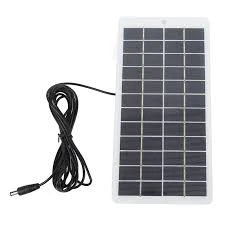bifacial solar panels working
Understanding Bifacial Solar Panels How They Work and Their Advantages
As the world shifts towards renewable energy sources, solar power takes center stage as an effective solution for sustainable energy consumption. Among the various solar technologies available, bifacial solar panels have emerged as a significant innovation. These panels differentiate themselves from traditional solar panels by harnessing sunlight from both sides, greatly enhancing their efficiency in energy production.
What Are Bifacial Solar Panels?
Bifacial solar panels are specially designed photovoltaic systems that capture sunlight on both the front and rear sides. This unique design allows them to utilize reflected sunlight from the ground and surrounding areas, increasing their overall energy output. Typically, bifacial panels are made with transparent backsheets or glass, enabling light to pass through to the rear side while also protecting the solar cells from environmental elements.
How Do Bifacial Solar Panels Work?
The operation of bifacial solar panels relies on the principles of solar energy absorption and reflection. Here’s a breakdown of their functioning
1. Sunlight Absorption Like traditional solar panels, bifacial panels convert sunlight into electricity through the photovoltaic effect. As sunlight strikes the solar cells on the front side, a chemical reaction generates electricity.
2. Reflection Utilization The real advantage of bifacial panels lies in their ability to capture reflected sunlight from the surface below. This is especially effective when installed over reflective surfaces such as white gravel, concrete, or snow. The reflected sunlight reaches the rear side of the panel, contributing to additional energy production.
3. Increased Energy Output Studies have shown that bifacial solar panels can produce anywhere from 10% to 30% more energy than monofacial (single-sided) panels, depending on the installation conditions and the albedo effect (which refers to the reflectiveness of the ground surface).
Installation Considerations
To maximize the benefits of bifacial solar panels, careful consideration must be given to their installation
bifacial solar panels working

- Orientation and Tilt The angle of the panels can significantly impact energy capture. Proper tilting allows optimal exposure to sunlight throughout the day.
- Ground Surface As mentioned, the surface beneath the panels should ideally reflect sunlight. This can be achieved by selecting the right materials, like gravel or certain types of soil.
- Spacing Ample distance between panels can help minimize shading from one panel to another, ensuring that both sides can operate effectively.
Advantages of Bifacial Solar Panels
Bifacial solar panels come with a host of advantages that position them as a promising choice for solar energy systems
1. Higher Efficiency The ability to capture sunlight from both sides makes bifacial panels much more efficient than their monofacial counterparts. This efficiency translates to higher energy yields, making them ideal for utility-scale installations.
2. Durability With their robust design and glass backing, bifacial panels are often more durable and resistant to environmental damage. This longevity can lead to lower maintenance costs and longer-term savings for operators.
3. Versatile Applications Bifacial technology can be applied in various settings, from residential rooftops to large solar farms. Their adaptability makes them suitable for different geographic locations and climates.
4. Environmental Sustainability By generating greater energy output, bifacial panels contribute more effectively to reducing carbon emissions. They support the global transition towards clean energy, aligning with sustainability goals.
Conclusion
Bifacial solar panels represent a significant advancement in solar technology, unlocking new possibilities for harnessing solar energy. Their unique ability to absorb sunlight from both sides ensures enhanced efficiency and increased energy production. As awareness of renewable energy grows, bifacial panels are likely to play an integrative role in the future of solar power systems, paving the way for a greener and more sustainable world. Embracing this technology can lead to substantial energy savings and bolster efforts to combat climate change, making bifacial solar panels a compelling choice for those looking to invest in clean energy solutions.
-
Navigating Off Grid Solar Inverter: From Use Cases to Trusted PartnersNewsAug.05,2025
-
Solar Edge String Inverter: A Wholesaler’s Guide to Inverter Technology SelectionNewsAug.05,2025
-
Microinverters: Revolutionizing Solar Energy UseNewsAug.05,2025
-
Future of Monocrystalline Solar Panel Efficiency: Latest Technological AdvancesNewsAug.05,2025
-
Solar Panels for House: A Complete Guide to Residential Solar EnergyNewsAug.05,2025
-
Panel Bifacial Performance in Snow and Low-Light ConditionsNewsAug.05,2025







